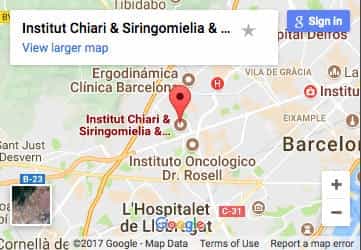
For more information on the postoperative period
For more information on the postoperative period
Last update: 24/03/2023, Dr. Miguel B. Royo Salvador, Medical Board number 10389. Neurosurgeon y Neurologist.
Risks and complications
In general, these procedures involve the risks typical of any surgical procedure, such as infection or bleeding in the area of the surgical wound.
The patient’s pre-existing conditions influence the postoperative period and subsequent evolution.
The intraoperative risks specific to each technique used are communicated to the patient before the operation and must be indicated in the consent form to be signed.
Postoperative period
Depending on the type of surgical technique, the surgeon will inform the patient about recovery times, contraindications during recovery, postoperative medications and check-ups of the surgical wound until it is completely healed.
As after any surgical procedure, previous symptoms may fluctuate in the postoperative period. In most cases, there is a progressive improvement with relief and disappearance of pain and inflammation – over a few months or the first year after surgery.
If long-term consequences persist
Symptoms resulting from the evolution of the hernia/protrusion prior to the exeresis surgery, such as pain, radiation, inflammation, altered sensitivity, or loss of strength, may not resolve, not improve, persist unchanged or even increase. In this case, the patient may fear that the surgical treatment was unsuccessful and/or that he/she may be responsible for the persistence of the disease.
In the first instance, it is important to consult with a specialist who, through the appropriate assessment and complementary tests, will be able to:
1. Check and confirm with the patient that:
- The spinal traction has been successfully removed -in the case of coexisting Filum Disease-.
- The correct hernia/protrusion exeresis technique has been applied.
- Any grafts or intersomatic boxes have been placed correctly and a compatible and safe material has been chosen for the particular case
2. Rule out or confirm::
- That there have been no postoperative complications: trauma or early exertion during the postoperative period which may have complicated the healing of the affected nerve pathways.
- Associated diagnoses: it is possible to detect other disc pathologies once the hernia/protrusion has been operated on, which were difficult to distinguish from the previous clinical picture. These pathologies are now more apparent and may cause similar symptoms in the same affected pathways as spinal canal stenosis, Baastrup’s syndrome, facet syndrome, etc.
Upon detecting any of the above-mentioned causes, the patient is treated and monitored until the symptoms have completely resolved.
If, however, the possibilities outlined in points 1 and 2 have been ruled out, the symptom may remain due to a potentially irreversible injury, and it may then be difficult for it to resolve. There are even sequelae of irreversible injuries that may continue to evolve after the hernia or protrusion is removed. Since both recovery and stopping the degeneration of the affected nerve tissue are impossible, the symptoms may worsen further.
For these cases, the physician can recommend palliative, symptomatic and conservative treatments that are suitable for the individual patient.


















